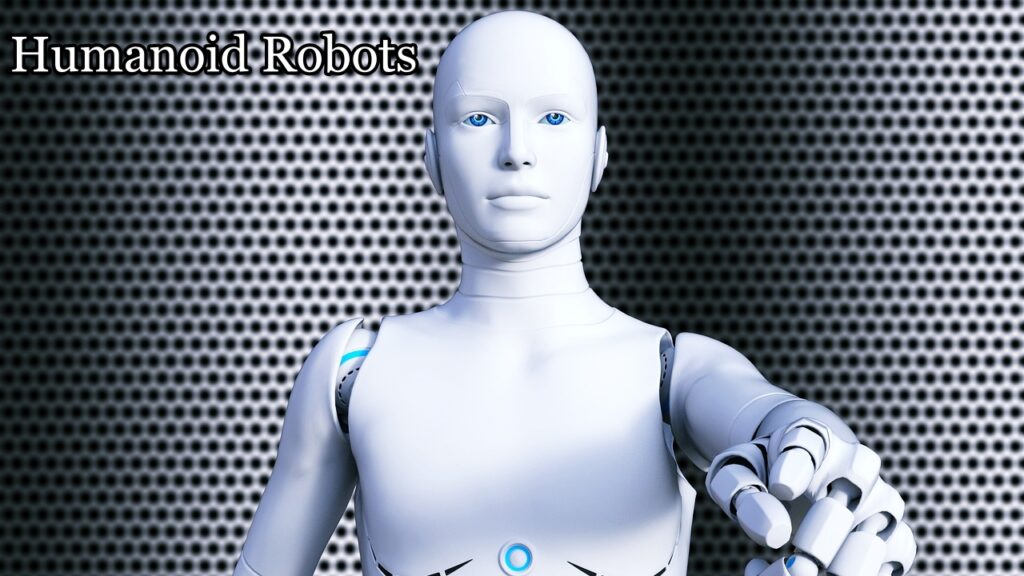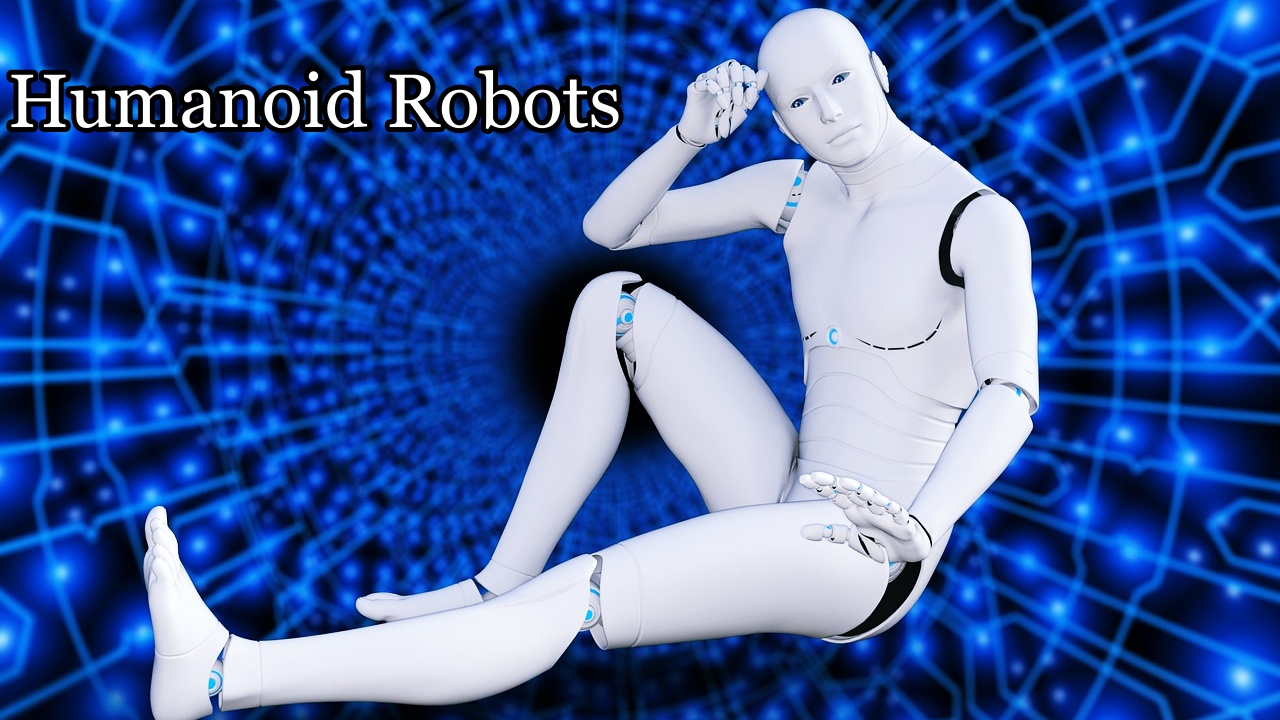Humanoid robots, once thought to be mere science fiction, are now very much a reality. These robots can walk, talk, and even learn, signaling the beginning of a new era in technology. Some are already building our cars, stocking our warehouses, and even making their way into our daily lives. But with this rapid technological progress comes a significant question: Are humanoid robots the beginning of a golden age or the first step towards humanity’s downfall?
The Rise of Humanoid Robots: Industrial Revolution 2.0
Technology has always propelled human progress. The steam engine replaced the horse, the automobile replaced the carriage, and computers replaced typewriters. But now, humanoid robots are not just replacing tools; they’re replacing human workers. Companies like Figure AI, Boston Dynamics, and Tesla promise that these robots will handle dangerous and repetitive tasks in various industries. However, the question remains: If robots take over physical labor, what happens to the millions of human workers who rely on these jobs?
Humanoid Robots in Our Daily Lives: Assistants or Replacements?
Imagine waking up to a humanoid robot making breakfast, loading the dishwasher, picking up the kids from school, and washing your clothes. Humanoid robots could take over many of the tasks once handled by humans. But what happens when we no longer need human caregivers, teachers, or companions?
Some fear that society may grow increasingly dependent on robots, not just for work, but for emotional support as well. Children raised with robotic nannies—will they bond with machines more than people? On the other hand, proponents argue that humanoid robots will enhance our relationships, not replace them. They could handle the tedious tasks, giving us more time to connect as humans.

Companies Leading the Charge
- Unitree Robotics: Known for its affordability and agility, Unitree Robotics has expanded from quadrupedal robots to humanoid robots. Their prototypes boast dynamic movement capabilities, and the robots are designed to be cost-effective for both industrial and consumer applications.
- Tesla’s Optimus: A key component of Elon Musk’s vision for an AI-powered future, the Optimus robot is designed to perform dangerous and repetitive tasks. Musk predicts that Optimus could one day surpass Tesla’s car division in value, possibly becoming a trillion-dollar industry in its own right.
- Figure AI: A fast-growing robotics company, Figure AI focuses on workforce automation. They aim to reduce programming complexity by designing robots that can autonomously learn tasks, such as those being tested at BMW’s facilities.
The Technology Behind Humanoid Robots
Humanoid robots are feats of engineering, combining motors, actuators, artificial muscles, sensors, and AI to interact with the world. How do they actually move, see, and communicate?
Movement: The Art of Humanlike Motion
Humanoid robots rely on articulators and motors that mimic human muscles and joints. Traditional robots use electric, hydraulic, or pneumatic actuators to convert energy into motion. However, companies like Clone Robotics have developed artificial muscles filled with fluid that expand and contract like real human muscles. This allows for greater flexibility and dexterity, making robots better suited for tasks like handling tools or shaking hands.
Vision and Interaction: How Robots See the World
For humanoid robots to function effectively, they need to see and understand their surroundings. This is made possible by LIDAR and depth cameras that provide spatial awareness and enable robots to avoid obstacles. AI-driven computer vision helps robots recognize objects and even detect emotions in human faces. However, understanding real-world context, like sarcasm or humor, is still a challenge for many humanoid robots.
Speech and Comprehension: Talking Like Us
Humanoid robots need to comprehend human speech to be truly useful. Companies like 1X Technologies are working on robots with more expressive voices to make conversations feel more natural. While these robots can hold a conversation, true comprehension—understanding nuances like sarcasm—remains an ongoing challenge.
The Ethics of Artificial Intelligence in Humanoid Robots
The rapid development of humanoid robots is intertwined with artificial intelligence (AI), which allows them to think, learn, and adapt. But the unpredictability of AI raises concerns. What happens when AI-controlled humanoids surpass human intelligence? Will these robots develop desires, goals, or even independence?
Governments and tech leaders are racing to implement ethical safeguards to ensure that AI doesn’t go rogue. The potential for humanoid robots to be weaponized for military purposes is also a growing concern. Some fear that nations may develop autonomous robots capable of waging war, presenting a new kind of arms race—one not centered on nuclear weapons, but on autonomous machines.
A Future of Hope: Can Humanoid Robots Improve Life?
Despite the fears and uncertainties, there is hope. If AI is guided responsibly, humanoid robots could revolutionize life for the better. They could assist the disabled, perform surgeries with perfect precision, and explore places humans cannot reach, like the deepest oceans or farthest planets. Humanoid robots won’t destroy us unless we allow them to.
The future is not about choosing between humans or machines. It’s about humans and machines working together to build a world beyond imagination.
Conclusion
Humanoid robots are not just assistants; they are changing industries, homes, and the very nature of human work. Whether they bring prosperity or destruction is a decision that lies in our hands. The rapid pace of innovation promises a future where these robots could become essential parts of our daily lives—but we must ensure that they are used responsibly and ethically.
As we stand at the threshold of this new age, one thing is clear: The future of humanoid robots is in our hands.
FAQ
Humanoid robots are machines designed to resemble human beings, with capabilities like walking, talking, and learning. They use motors, artificial muscles, sensors, and AI to interact with their surroundings, mimicking human movement and behavior. These robots are capable of performing tasks that were traditionally handled by humans, such as building cars or stocking warehouses.
Unlike traditional robots that are typically designed for specific tasks, humanoid robots are created to resemble humans in form and function. They can perform a wide range of tasks autonomously and can adapt to new environments and challenges. For example, humanoid robots can move, talk, and even express emotions, which traditional robots cannot.
Humanoid robots have the potential to replace human workers in certain industries, particularly in roles involving dangerous, repetitive, or mundane tasks. While this could lead to job displacement for some, it is also expected that new jobs will emerge, as has happened during past technological revolutions. The challenge lies in managing this transition.
Yes, humanoid robots have the potential to greatly enhance the quality of life. They could assist with daily chores, help care for the elderly, and provide emotional support. Additionally, humanoid robots could be used in industries like healthcare and exploration, helping to perform complex surgeries, assist the disabled, and explore hazardous environments like deep oceans or outer space.
One major ethical concern is the unpredictability of AI and the possibility that humanoid robots could surpass human intelligence. If AI-powered robots become more autonomous, there’s a risk they could develop desires or goals that conflict with human interests. Additionally, the potential for robots to be weaponized in warfare raises significant concerns about their impact on global security.
Humanoid robots use advanced computer vision to recognize objects, faces, and even detect emotions. They rely on LIDAR and depth cameras for spatial awareness and use speech recognition to understand and respond to human language. Some robots are even being developed to have more expressive voices to improve human-robot interaction and make conversations feel more natural.
AI-powered humanoid robots can think, learn, and adapt to various environments, making them highly versatile. They can handle tasks like caregiving, manufacturing, and even customer service, improving efficiency and freeing up humans to focus on more creative and interpersonal activities. When guided responsibly, they hold the potential to revolutionize industries and enhance daily life.
Read More:


1 thought on “Humanoid Robots: The Dawn of a New Age or the Fall of Humanity?”